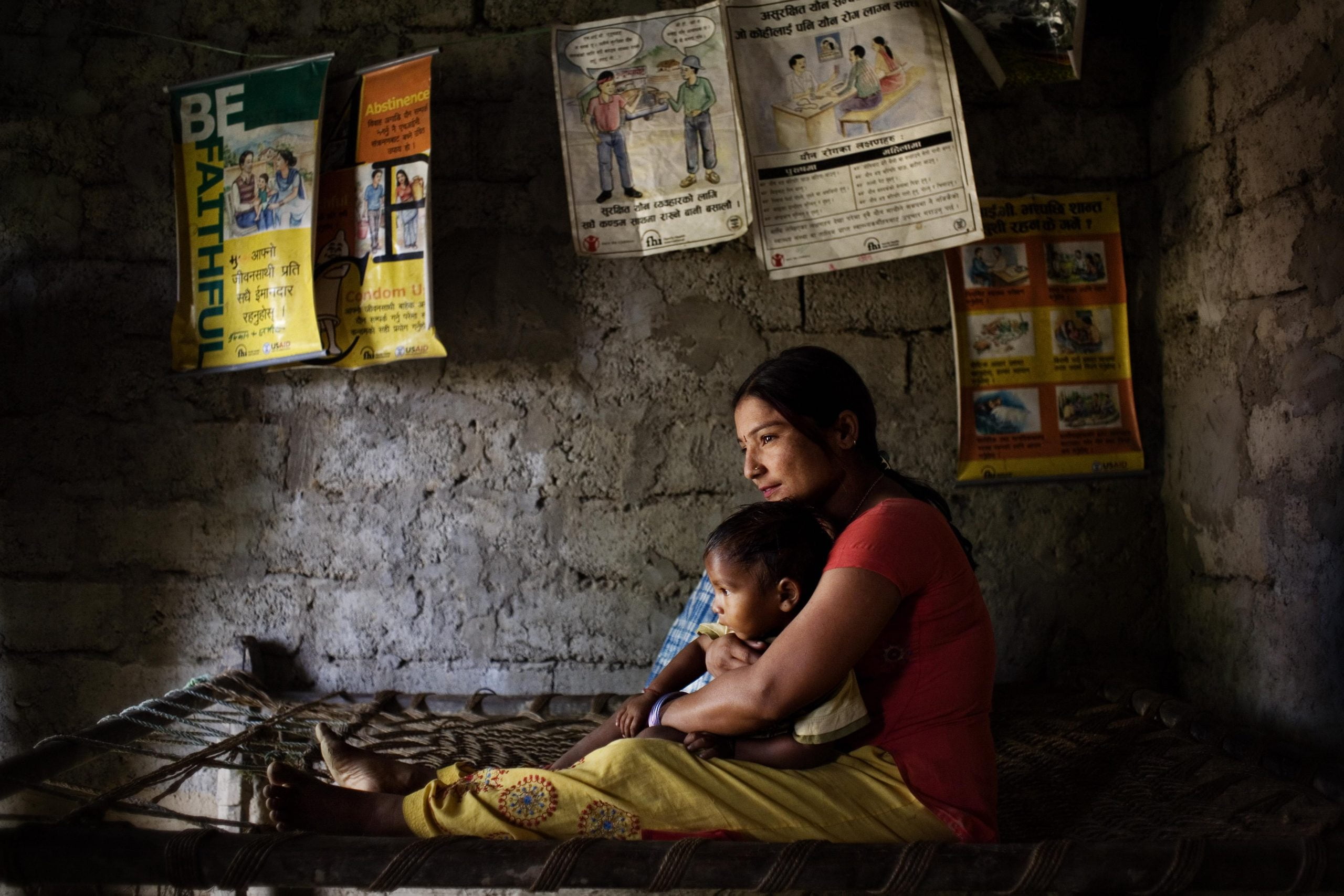Attending the session on Minority Women: 25 Years as Agents of Change Together in Beijing +25 Asia-Pacific CSO Forum, I came across a video in a presentation that discussed the deplorable conditions of Dalit women in Nepal. Living in India and being a Dalit woman myself, I have always been exposed to Dalit literature, activism and everyday life discrimination. To find instances of transnational solidarities of India with its neighbouring country of Nepal, where Nepali Dalit women’s lives too are intertwined with gender roles, casteism and patriarchal subordination, startled me. This bond based on mutual experiences of oppression might not be ideal. However, through the years, their commonalities and differences in fighting against patriarchal casteism and casteist patriarchy can show the way for a more equal world, bereft of inequalities, or at least towards a less unequal society.
Caste System
The caste system is a Hindu socio-hierarchical system of categorising people into structures of inequalities that not only determines their occupation, but also their subsequent life and livelihoods. It originates from the varna (Sanskrit word meaning colour) system of social ‘order’, whereby light skinned Aryans disassociated themselves from dark-skinned indigenous people of ancient India. These notions have been countered and cross countered repeatedly through time in theory. However, social discrimination in practice experienced by Dalits is perpetuated as a stark, shocking reality, even today.
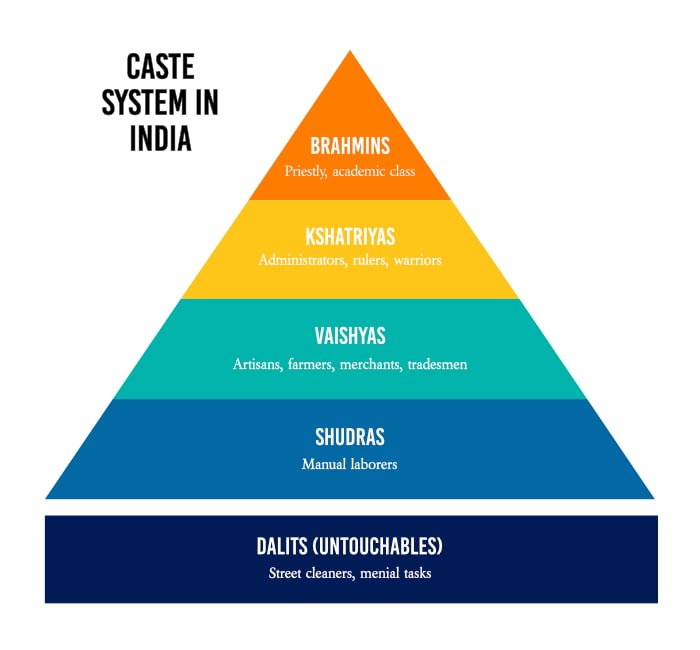
Over the years, the forms of discrimination have morphed into its modern avatars, where the creation of nation-states (India, Pakistan, Bangladesh, Nepal) has given rise to multiple complexities, in an attempt to both eradicate as well as perpetuate caste lines of purity and pollution. Further, various intersectionalities within the category of Dalits arising from class, gender, regional and political positions, have led to more violent forms of discrimination. Violence against Dalit women, often caused by upper caste men and men in positions of relative power, has been a deciding factor in making India the most unsafe country for women to live in. In the case of India, according to the Census 2011, Dalit women comprise of 48.59% of the Dalit population in India, which is 16.6% of the total population of India.
Hence, the intersections of caste and gender come alive, not simply with regards to the everyday experiences of exclusion in educational and employment opportunities, but also in the form of sexually motivated forms of aggression.
Caste In Nepal
Nepal, being a majoritarian and traditionally Hindu country with an 81.3% Hindu population has been essentially structured around the caste system. Consequently, lower caste and ethnic groups, especially the Dalits in Nepal have been subjected to caste violence that draws lines of ritual and societal purity and impurity, thereby ascribing occupations based on their position in the caste hierarchy.
Violence against Dalit women, often caused by upper caste men and men in positions of relative power, has been a deciding factor in making India the most unsafe country for women to live in. In the case of India, according to the Census 2011, Dalit women comprise of 48.59% of the Dalit population in India, which is 16.6% of the total population of India.
However, the category of minorities in Nepal include not only the Dalits, but also many other ethnic, language and religious groups which have been systematically suppressed through the years by the majoritarian Hindus. According to a source, “There are fifty nine indigenous nationalities in Nepal. They are not only indigenous nationalities but minorities too. In addition to indigenous nationalities, women, dalits, madhesis and the people of the far western region of Nepal are minorities.” All these groups have individual spaces and cases of discrimination and hence, their demands for political representation and social recognition differ from one group to another.
Interestingly, while Dalits in Nepal constitute only 13% of the population, 50% of the Dalit population is constituted by Dalit women. The Census Report of 2011 accounts for 1.8 million Dalit women in the country. These women not only have to face discrimination by people outside the Dalit community, but also are often confronted with Dalit men, who are relatively empowered by systemic patriarchy. Land is a major determining factor in understanding their perpetually oppressed position in society. Most Dalits are landless, especially the women, and hence, are bound by various exploitative labour management customs in Nepal: Balighare, Haliya, Charuwa, Khalo.
Over the years, governments in Nepal have failed to identify the ways that would help in alleviating the social and financial insecurities of these groups. On paper, the country does have legislation to protect the rights of marginalised people The Caste-based Discrimination and Untouchability Crime Elimination and Punishment Act (2011) prohibits and criminalises caste based untouchability practices in public and private spheres. However, despite such laws, it is of little surprise that the Act’s effective implementation has not been monitored.
Nepal also has reservations implemented for its minority groups. Such efforts at affirmative action for the betterment of the Dalit community in Nepal must be lauded, but it should also be realised that affirmative action do not result in complete eradication of discrimination. This is because, discrimination has various forms and faces which enact itself distinctly in various situations. Hence, although such reservations may lead to a certain amount of mobilisation for some parts of the marginalised communities in question, but for others, discrimination and its consequent prejudices continue to thrive. Additionally, affirmative action usually facilitate Dalit men, since they have relative privileges as against to Dalit women, who are over burdened by both patriarchal and caste oppression.
India
Caste system is rooted in Hinduism, although people in India would like to believe that it is a colonial “invention”, since the colonial administration did assign and categorise the traditional caste system into new urban nation-state categories of Scheduled Castes and Scheduled Tribes. But such a system of caste inequality has prevailed even before they were here to rule us.
The revolution for the Dalit community in India was driven by Dr. B.R. Ambedkar, who in contemporary times has become the face of almost every space of dissent against state-inflicted oppression. Ambedkar, with his relative privilege of accessing proper education acquired spaces of power within state bureaucratic systems, which were traditionally infested by upper caste men. During the formulation of the Constitution for an Independent India, Ambedkar pushed for affirmative laws for Dalits. He advocated Reservations in formal educational and employment spaces, in order to ensure that the existing caste inequalities are meted out to a certain extent by providing them upward mobility in the economic and political ladder.
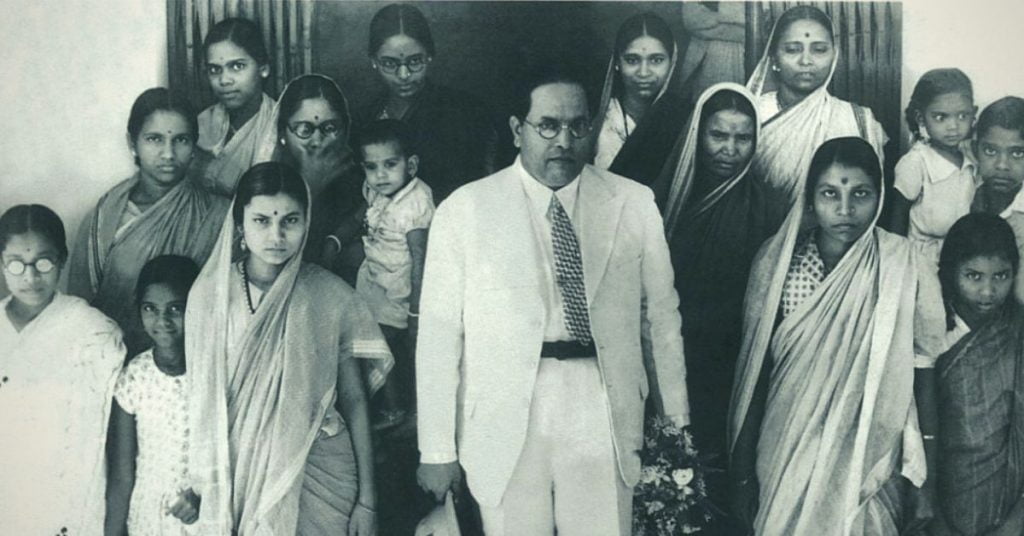
Although the quota systems and reservations for lower caste groups (SC, ST and OBC) have helped Dalit men enter public institutions, but Dalit women in India still face stringent competition by upper caste men and women and Dalit men and are often forced to take up menial jobs for really low wages. For example, research has found that a large number of women are engaged in cleaning sewage and excreta. The Safai Karmachari Andolan, an organization with the mission to eradicate manual scavenging, has found that approximately 98 percent of these workers are women. Adding to that, they are given no job security, are subjected to terrible working conditions, provided with menial wages and are susceptible to sexual assault.
Solidarities: Dalit Women In Nepal And India
Solidarities across nations do not simply refer to the organisations that work together towards similar goals. Often solidarities do not even include active interaction between organisations or individuals. When I refer to transnational solidarities, I want to extend the very definition of what the word might constitute. The solidarities that I discuss here include the various ways the Dalit communities across geographical borders imagine, politicise and lead their lives, due to their mutual experiences of various forms of oppression perpetrated by religious, state and patriarchal systems. The local, regional and even national camaraderies sew the threads of the solidarities woven across nation states.
Dalit Feminism
Dalit feminism in India arose as a critique of savarna feminism in the 70s and 80s. While most feminist organisations were originally started by male reformers of British India, post-Independence, upper caste women from these organisations demanded autonomy from the reformers. However, although organisations were now run by women, these were mostly upper caste women who received education and were able to acquire public spaces. But concerns that were tabled mostly belonged to the upper caste women, which disregarded the struggles of Dalit women. Hence, Dalit women in India started dissociating themselves from savarna feminism and began organising themselves to table their issues.
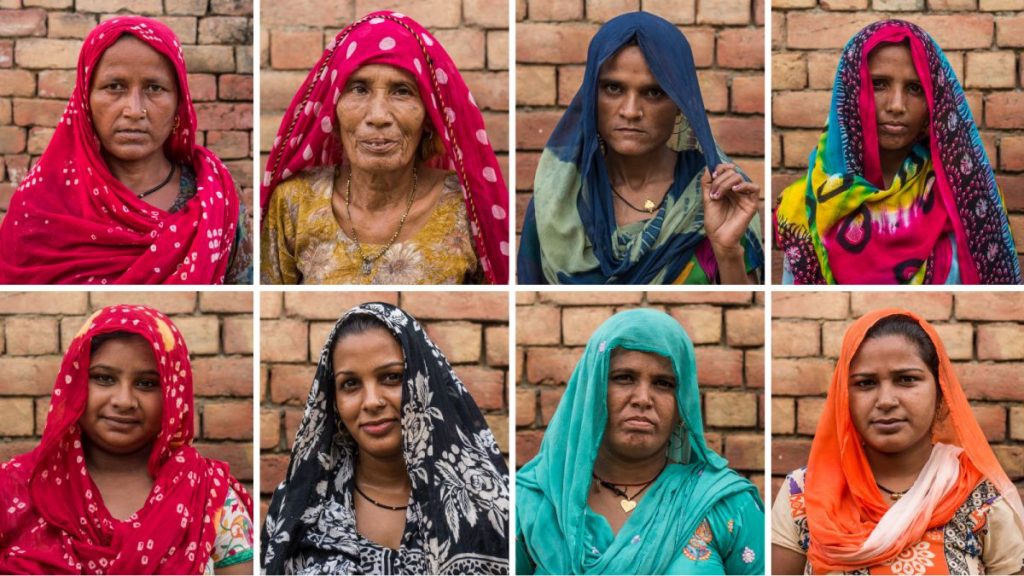
According to Indian Institute of Dalit Studies (IIDS), “In 1995’s Beijing Declaration of Indigenous Women accepted that indigenous women face some specific problems due to their social status. After 1995, many organisations like National Federation of Dalit Women (NFDW), All India Dalit Women Forum and Maharashtra Dalit Mahila Sangasthan etc. came up and started addressing the issues of women empowerment from socially marginalised communities. In 2003, Dalit Bahujan Mahila Vicharmanch publicly set aflame the Manu Smriti at the historic Chaitya bhumi (Rege, Sharmila, 2006) and revived Ambedkarite movement for women empowerment.”
On the other hand, while Nepal has historically gone through various changes, with respect to its political stability and economic reforms, organisations which advocate Dalit women’s rights and promote political participation for the Nepali Dalit women, have been set up lately. FEDO or the Feminist Dalit Organisation, which is a national level NGO in Nepal, that was established in 1994, organise and empower Dalit women to become more active in order to infiltrate the male-dominated spaces occupied mostly by upper caste people. Association for Dalit Women’s Advancement Of Nepal or ADWAN is another organisation that aims at empowering Dalit women of Nepal through skill-building and training programmes that would help them in alleviating economic deprivation.
Such histories of Dalit feminism certainly does not mean that Dalit feminists did not exist before a certain point of time. Caste struggles have always been a part and parcel of life and Dalit women have been active participants throughout. The only difference is that their struggles may not have been well documented or accounted for.
Such histories of Dalit feminism certainly does not mean that Dalit feminists did not exist before a certain point of time. Caste struggles have always been a part and parcel of life and Dalit women have been active participants throughout. The only difference is that their struggles may not have been well documented or accounted for.
Sex work
Dalit women who are subjected to violence both outside and within the Dalit community often find themselves in exploitative educational and working conditions: menial jobs, sex work and other oppressive forms of labour. In Nepal, Dalit girls of the Badi caste (Dalit caste group) are often pushed into prostitution from birth because this is considered their “caste based occupation”. In fact, most of the women in India and Nepal’s sex industry are either Dalits or Tribals. Discrimination renders them extremely vulnerable to trafficking where young girls are sold to brothels.
Burnad Fatima, a Dalit activist and a member of Asia Pacific Forum on Women, Law and Development (APWLD) explains how Dalit women in India are pushed into sex work or are often seen as sexually available to upper caste men, “Being very poor economically, the social status is also not an equal status. For Dalit women, the so-called Dalits among Dalits, that is their condition. Dalit women are also treated – cheap sex for the other communities. There are also religious practices where they use Dalit women as devadasis called Mathamma in various communities. And they are not allowed to marry, they are dedicated to the temple, to the goddess Mathamma and let them dance during the temple festivals. And not being allowed to marry means they are ‘public property’, thereby pushing them into religious sexual exploitation.”
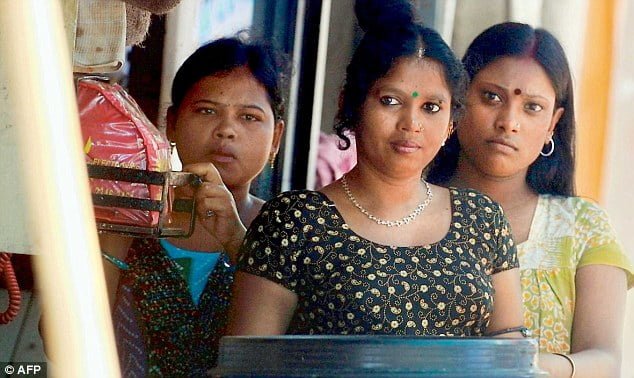
She also explains how land becomes a determining factor for their social and economic subordination, thereby leading to various forms of sexual exploitation by the historically privileged upper caste landlords. “It’s mainly done by landlords and mostly it’s also related to land, since Dalits are dependent on land, they work for the landlords in the rural areas or in factories, they work for the factory owners. But in the rural areas there’s so much economic dependence so they have to let the women serve the other men. Even within the marriages, the first night is spent with the landlord.”
Reservations, Positive Discrimination And Representation
When it comes to political representation of Dalits, it is of no surprise that Dalit women are underrepresented in such positions of power and decision making. However, discrimination against Dalit women does not end by their upward mobility in social and economic positions. Often, mobility could also incite caste violence against Dalit women. When Dalit families flourish, especially economically, due to the affirmative action policies such as reservations and quotas in urban settings, the upper caste families find it difficult to accept the bridging gaps that were once a fuel for their labour source and superiority complex.
Also read: Watch: Dr. Ruth Manorama On International Dalit Women Solidarity
A Dalit woman in Bihar, India recalls her horrific experience of caste violence from an upper caste man. “He called me a “whore” and abused my caste and then he took a stone and hit me with it. The reason is that we stopped borrowing money from the money lender (upper caste man). We’re saving money by ourselves and running our households. With the small contribution of 20 rupees each a month. The moneylenders realised that we had stopped borrowing money and we wouldn’t be visiting them anymore, and they don’t allow people like us to progress.”

Dalit women in Nepal have it worse. Be it socio-economic conditions, political representation, casteist violence or sexual violence, Dalit women in Nepal face multiple human rights violations. Sobha Achhami, a Dalit woman and a day labourer, in a documentary by DW about Dalit women’s lives in Nepal said, “When I work for someone in an upper caste house, they usually don’t give me food. I have to go to a cafe. At the cafe too, they ask me to eat my meal outside and rinse all my dishes myself.” A Human Rights Watch report further states that, “Since the early 1990s, violence, abuse and rape against Dalit women has escalated dramatically in response to the growing Dalit human rights and self-determination movements.”
How are Dalit women doing in India and Nepal today?
Dalit communities in Nepal continue to be systematically made politically voiceless, economically unstable and most importantly they have been perpetually subjected to social exclusion. Violence against Dalit women in the form of custodial torture, public humiliation and sexual harassment continue to exist in both urbal and rural areas, along with poor legislations and societal security. They are still trapped in extreme poverty, denied land rights or economic benefits, punished if they break caste rules and are vulnerable to caste based trafficking of women for slavery or sex work.
Also read: Dalit Women Learn Differently: Experiences In Educational Institutions
Similarly, with the rising Hindutva in India, an ideology advocated by the ruling BJP government, the Dalits in India are not only facing everyday microaggressions in both rural and urban areas, but they are also lynched by brahminical and casteist fringe groups in many parts of India. While most reports are of Dalit men, Dalit women too face severe consequences of sexual harassment, rape, discrimination, refusal of basic human rights as well as state implemented rights, lack of education and employment, poor menstrual health management, undernourishment and a general lack of representation in spaces of power and influence, due to this project of Hinduising India.
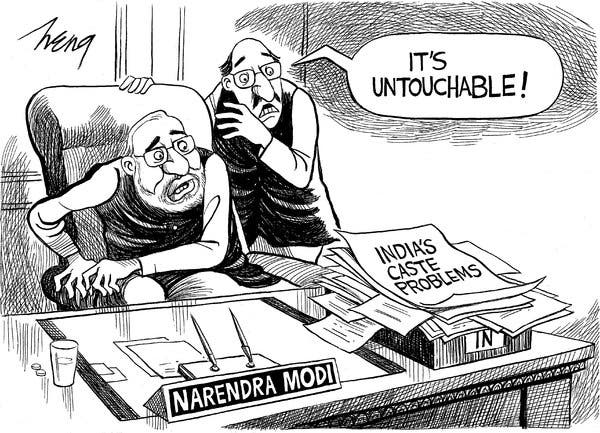
However, there still are Dalit women who, despite such difficult circumstances, have been able to mobilise themselves across caste and patriarchal hierarchies to represent Dalit women globally, nationally and locally. And through these bonds of shared goals and oppression, sometimes actual or virtual and in other times, abstract make such solidarities stronger and ensure a continuous opposition to casteist or patriarchal domination.
This article was written with the help of recommendations from the Asia Pacific Forum on Women, Law and Development (APWLD) for the Beijing +25 Regional (Asia Pacific)CSO Forum.
Featured Image Source: ISDN
About the author(s)
Pragya is a Master's Graduate in Sociology from Jawaharlal Nehru University. She works as the content editor at Feminism In India. She is also a ramen enthusiast, a hummus mother, a postcard hoarder and a wannabe cat lady. She still prefers writing on her notebooks, rather than on her laptop, but her job demands her to do just the opposite. Her favourite season is spring, and her alter ego is that of Mrs. Dalloway who said, "She would buy the flowers herself", in case no man ever buys her any!
